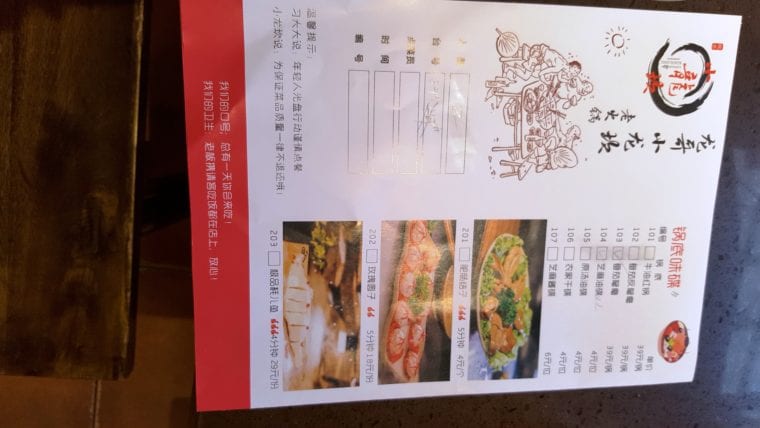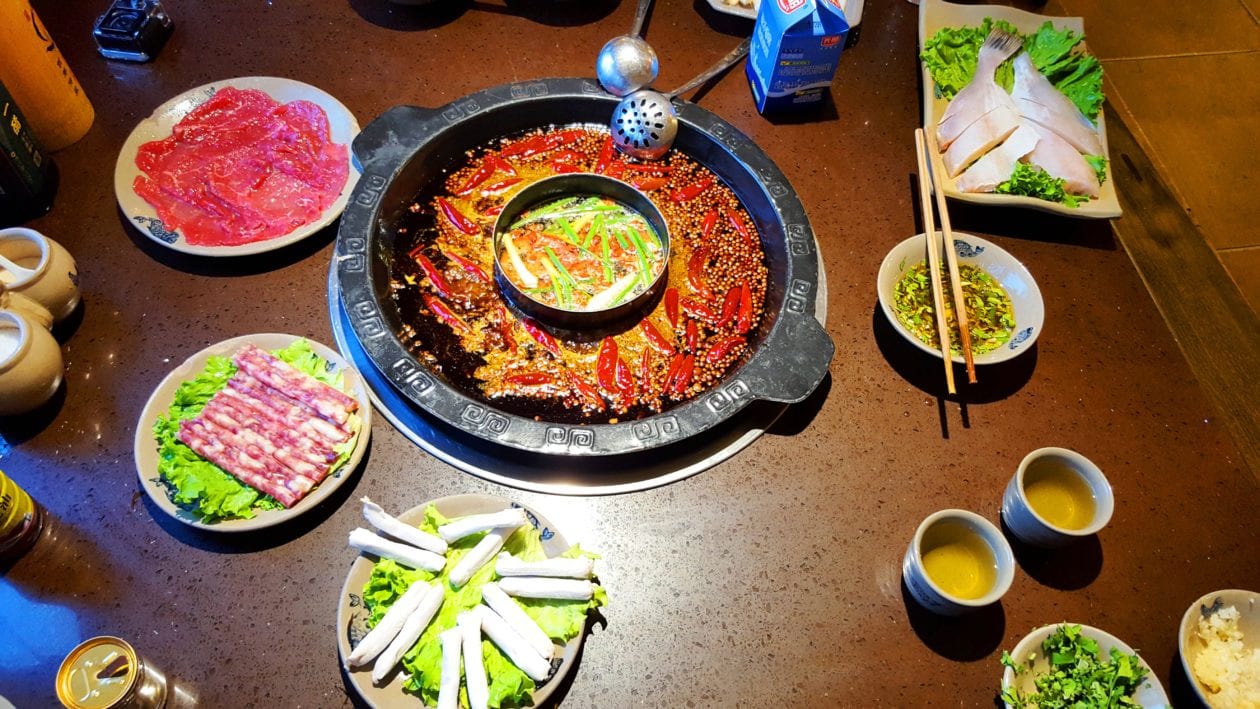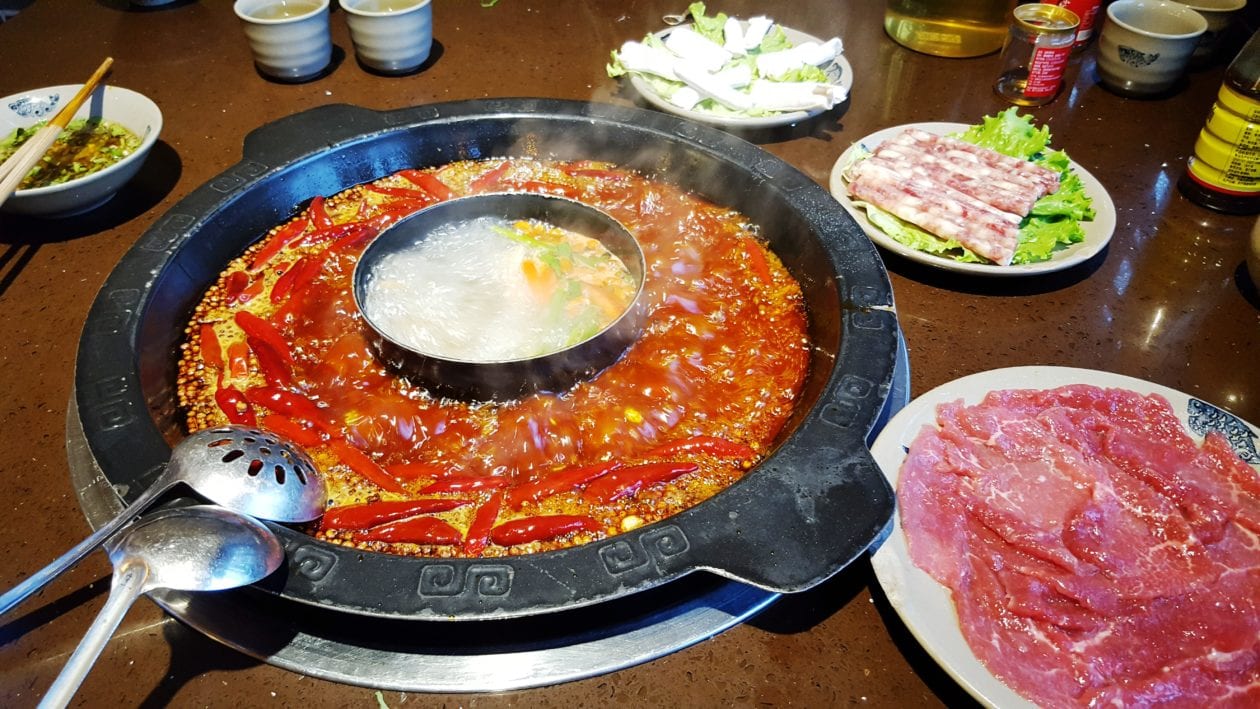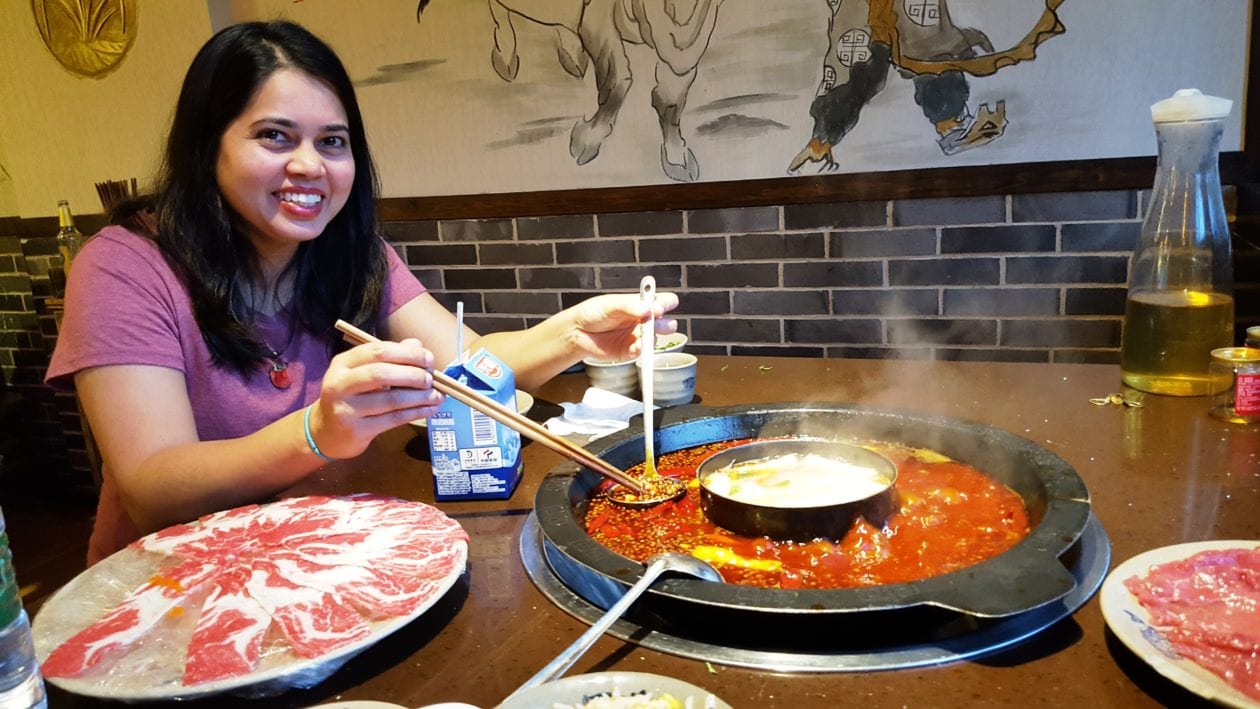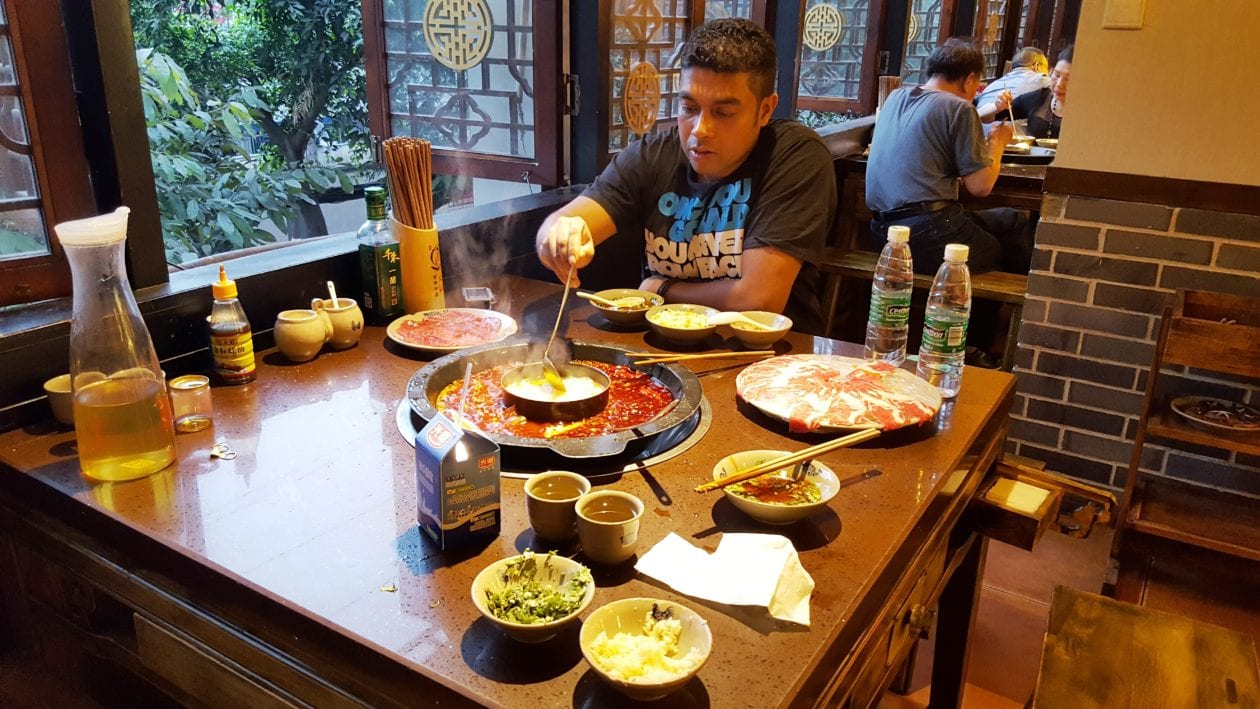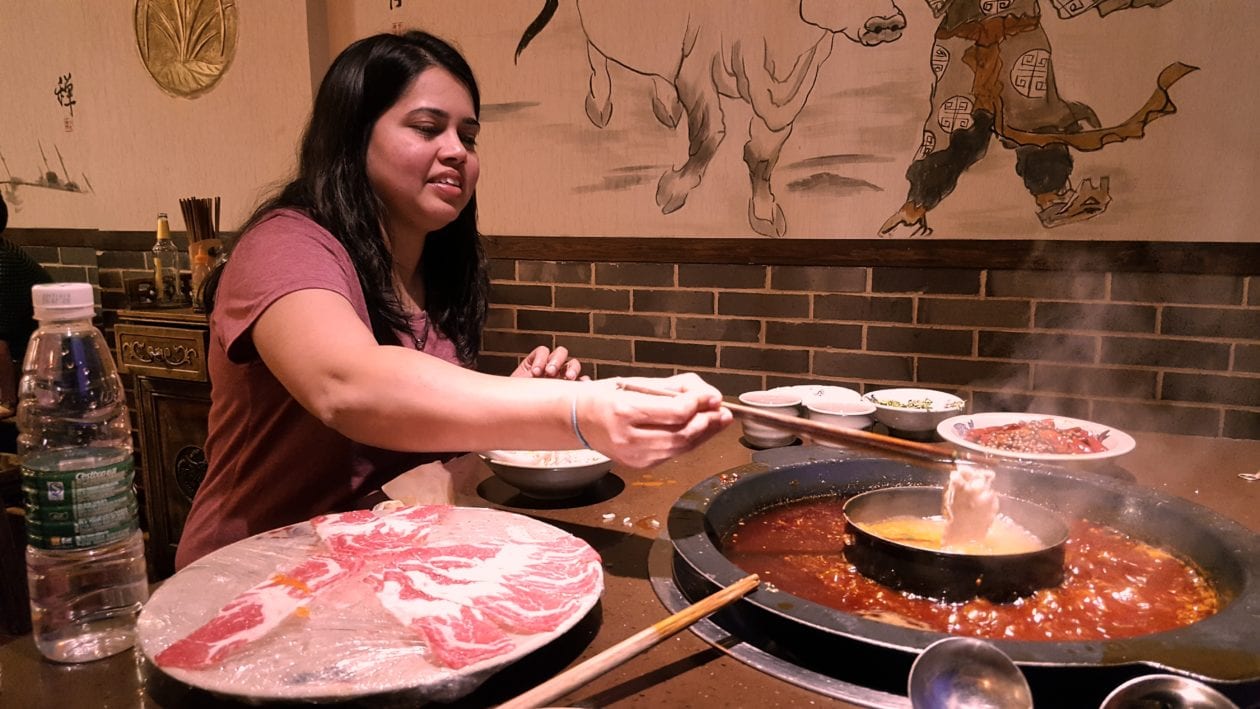Better to see something once than hear about it a thousand times.
Sichuan Cuisine : Surviving the Chengdu Hotpot
Sichuan food is largely renowned for being spicy, oily and filled with Sichuan peppercorns. The hotpot I must say is at the peak of the food pyramid in Chengdu and a must have for every visitor. Chengdu isn’t complete without doing the 3 must-do things while here – Click here
Though there are many hot pot places in Chengdu, yet where you have it defines your experience. We had done our research and we zeroed in on Xiaolongkan Old Hot Pot.
We were welcomed in by the staff and provided with a window seat on their first floor. The restaurant was quite crowded considering it was a weekday evening. One of the waiter approached us and we made it clear that we dint know much Chinese. He rushed back to get an English menu- though nothing much was in English. And that’s when the thing got very complex. We were adamant on trying the hotpot but we were in a place where we dint know a word of Chinese and the hotel staff dint know a word of English! This was our first meal in China, though we later realised that this was the case everywhere.
The first step is to choose the Broth. If you are up for the spice Challenge then opt for the Traditional Spicy oil broth(Red), but if your taste buds aren’t yet suited to the local palette then opt for a less spicy or non spicy broth(White). I would recommend going for the Half Spicy/Half clear broth. It comes in a traditional pot divided into 2 sections like a giant Ying and Yang. The spicy soup base is made with plenty of Sichuan peppers, chillies and red chilli oil.
The next step is to select the raw ingredients. Once you have selected your pot then you need to select what you need to cook in this pot. Thanks to Google Translate – we were able to get the message across. Also the waiter had his own translate app which helped us communicate. We went for a plethora of dishes ranging from sweet sausages (my personal favourite), bamboo shoots, tender beef, fish, fried rice, mushrooms etc. They say 3 dishes per person is a good thumb rule as they are quite big portion sizes—though we went overboard here!
The third step is to create your own dipping sauce – this is the sauce you dip into before eating your cooked ingredients. We asked the waiter to help us here, who happily created a dip for us with sesame oil, garlic, ginger and spring onions called Youdie (油碟).
The Hot pot arrived first with a simmering stove underneath which in no time started boiling. The food then arrived and as I mentioned before it was a huge palette of dishes.
The Fourth step is to don the Chef’s hat. You need to dip the raw food into this boiling hotpot and let it cook. For example tender beef takes just over a minute to cook as it’s very thinly sliced, whereas fish might take around 10 minutes. These hotpots are no doubt a social affair where everyone on the table turns into a chef – at times making it hard to find what you just dropped in the hotpot! The food was absolutely amazing. The combination of fresh meat, spicy broth and the dip was simply mesmerizing.
Our friendly waiter was adamant on us using the chopsticks as they dint offer forks and was very willing to teach us. But I was more focused on the food and less on what tool I used! But I did carry my own Spoon/Fork which came handy.
The heat of this dish gets on to you gradually and the first tip is order yogurt. This helps to counter the spiciness, calm your stomach and helps digestion. But after a while the red broth started getting more and more dangerously spicier as the chillies released more of their heat. We then said this to the waiter who then removed the red Sichuan chillies from the broth and added more clear broth to lower the intensity – a timely saviour as I had almost lost the senses on the tip of my tongue. ![]()
I then relied on the clear broth for the rest of my hotpot. This was an amazing fulfilling experience though it irked my nerves at times due to the language barrier, it was food which bridged these cultural barriers to me make it a memorable experience.
We did use the waygo app for reading the menu but the waiter was more than happy to help us, though after a while he gave up on us both learning how to use chopsticks . The Bill was ~200RMB for 2 persons and can be much lower.
Chengdu isn’t complete without doing the 3 must-do things while here – Click here
If you have any questions around this please feel free to leave a comment below and I’ll get back to you at the very earliest.
